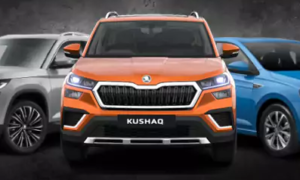There has been a tremendous amount of progress made in the field of electric cars recently. High gas costs are prompting many Americans to consider making the switch to electric vehicles, and it’s not just because they’re becoming more popular on the roads thanks to companies like Tesla and Lucid. Yet the makers of electric vehicles aren’t resting on their laurels; improvements may be on the horizon. Tesla and its Chinese counterparts BTD are among the businesses investigating a new kind of battery that might significantly improve the speed and range of EVs. Batteries play a critical role in ensuring the smooth operation of EVs. They’re also a point of concern skeptics like to bring up regularly.
Electrochemical Cells for Electric Vehicles

Changing the batteries in a high-end electric vehicle like a Tesla Model X would likely be a time-consuming and costly endeavor. Fortunately, it’s unlikely that they’ll need to be updated often. Tesloop, an electric vehicle (EV) rental firm, says one of its EVs has logged 330,000 miles with just 23% battery degradation. This is consistent with Elon Musk’s statements that Tesla batteries should last between 300,000 and 500,000 miles, or 1,500 charging cycles. About 12,000 miles a year is placed on cars by the typical automobile owner. A car with 300,000 miles on it would likely have other problems than a dying battery if you were to find it on the used market. So, EV batteries are ok in the year 2022. Is it possible, nevertheless, for them to improve any further?
Batteries and Their Problems

Innovations in battery technology have allowed for significant progress. However, there comes a threshold of diminishing returns at which more effort will not improve the situation. When a technological advancement is novel and little understood, there are many opportunities for innovation and improvement. But when technology advances, researchers find that they must put in twice as much effort for just half as much development. The lithium-ion battery has been around for a while and is used in everything from mobile devices to electric cars. They may have reached the point of decreasing returns, or be close to doing so (via Green Tech Media).
There is a straightforward option if your EV need additional power but you are unable to improve the efficiency of its batteries. To solve the problem, just add extra battery cells. Lightweight construction is a primary goal in automobile engineering. More batteries would greatly increase the weight of the vehicle. It takes more energy to move that much weight, thus the extra battery capacity quickly drains. There is also the influence on the car’s handling and its parts. The brakes will need to be upgraded since heavier things are more difficult to stop, and there may still be some safety concerns even after the improvement. Fortunately, a viable alternative exists, and it may soon be used in EVs.
The Electric Vehicle Industry May Need to Adapt to New Battery Technologies.
The batteries used in future electric vehicles will be much more efficient thanks to two technological breakthroughs. First, they need to be integrated more seamlessly into the body of the vehicle. Second, the batteries’ inert structural sections need to be replaced with material that can retain and transmit a charge, and dead space has to be eliminated. As for the ideal battery, Wired spoke with Euan McTurk of Plug Life Consulting to find out more about it. It quotes him as saying: “It would be ideal if battery packs were made of nothing but active material. In other words, the battery pack as a whole is a storage and discharging device.” Typical methods of assembling batteries require arranging cells in “modules,” with the modules then being connected to form “packs,” which may result in a lot of wasted space. By developing a “cell-to-pack” system with its “Blade Cells,” BYD hopes to do away with the dead air. Improvements in vehicle range will be dramatic as a result of cell-to-pack technologies, new battery compositions like lithium-ion phosphate, and more efficient utilization of the vehicle’s construction.
Battery packs for electric vehicles are now double-stacked in certain locations, such as behind the back seats and beneath the center console. The vast cruising distance of vehicles like the Lucid Air is a direct result of such broad separation between nodes. The Air, being a luxury vehicle, has a limited range of 520 miles. More cheap EVs with ranges more than 600 miles are possible if the new battery ideas are widely adopted.
READ MORE- Everything You Should Know Before Purchasing An Electric Vehicle



